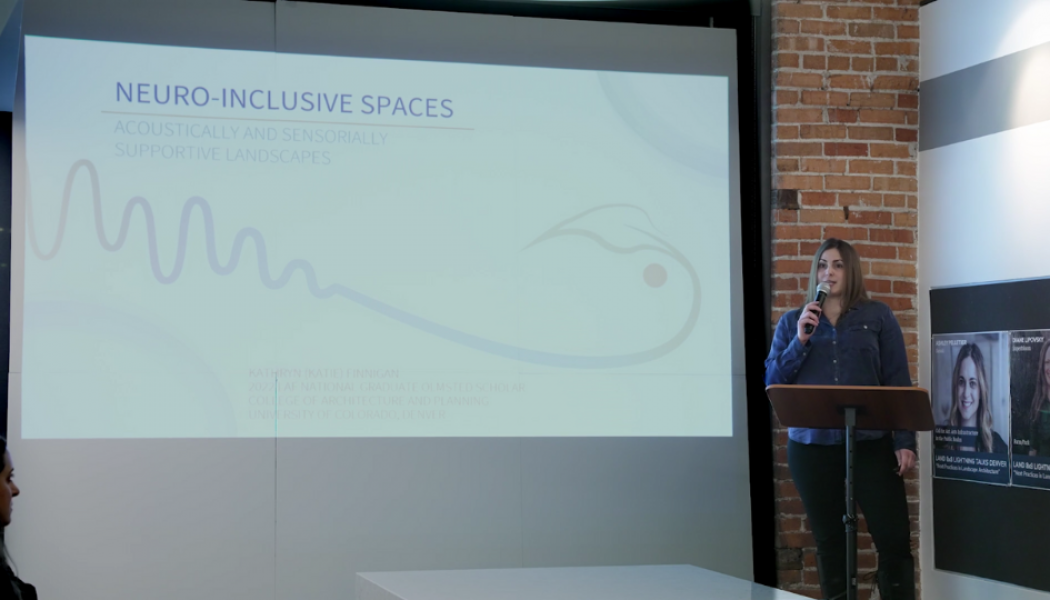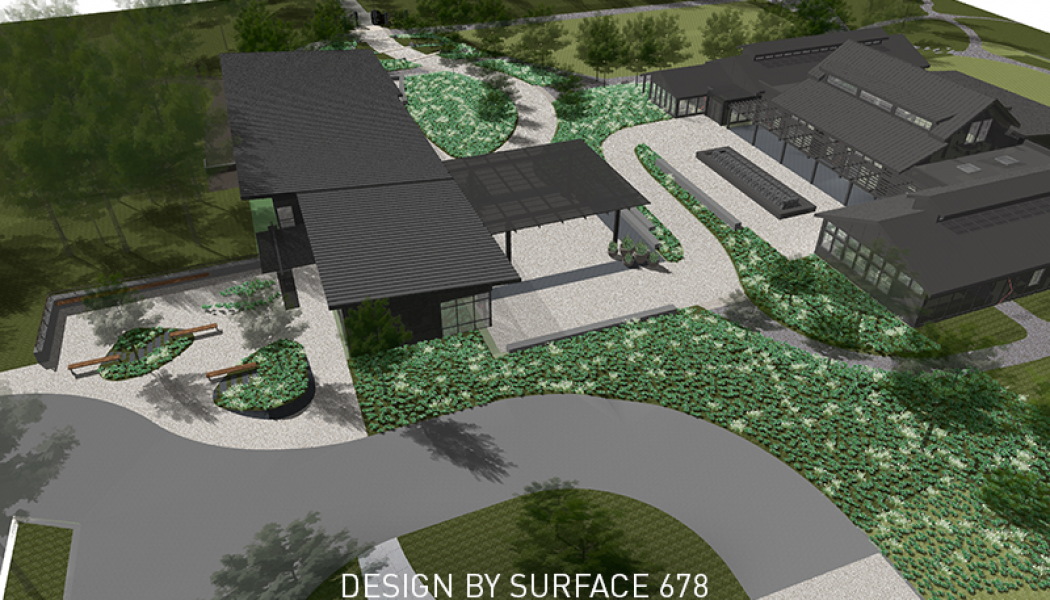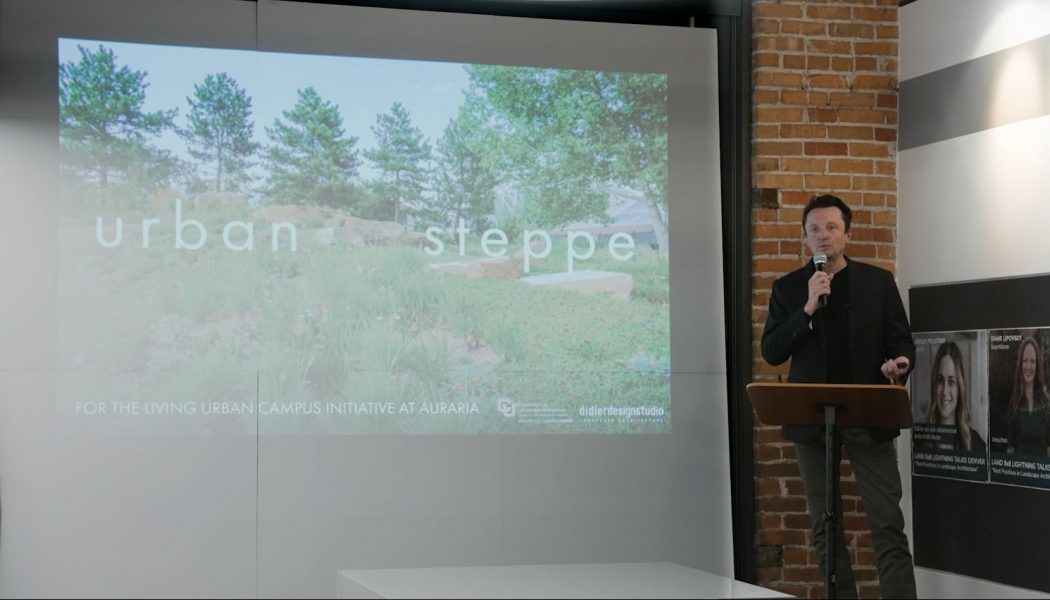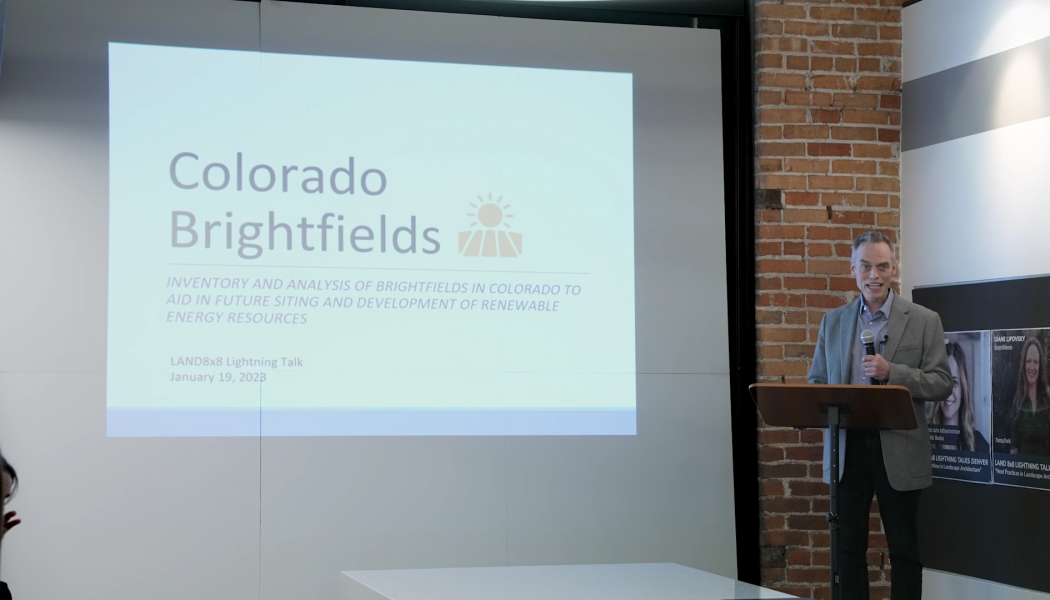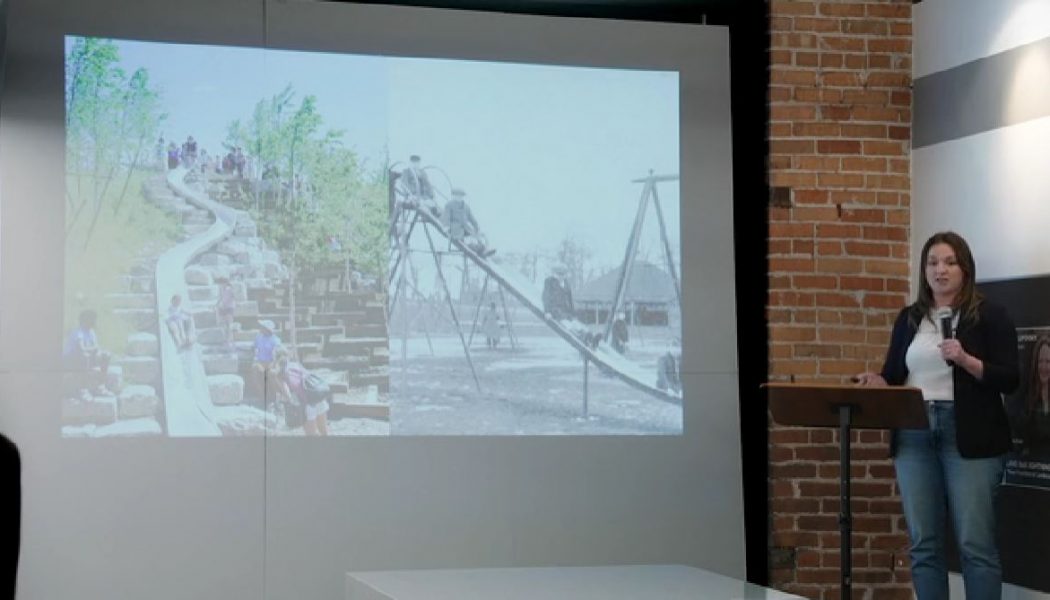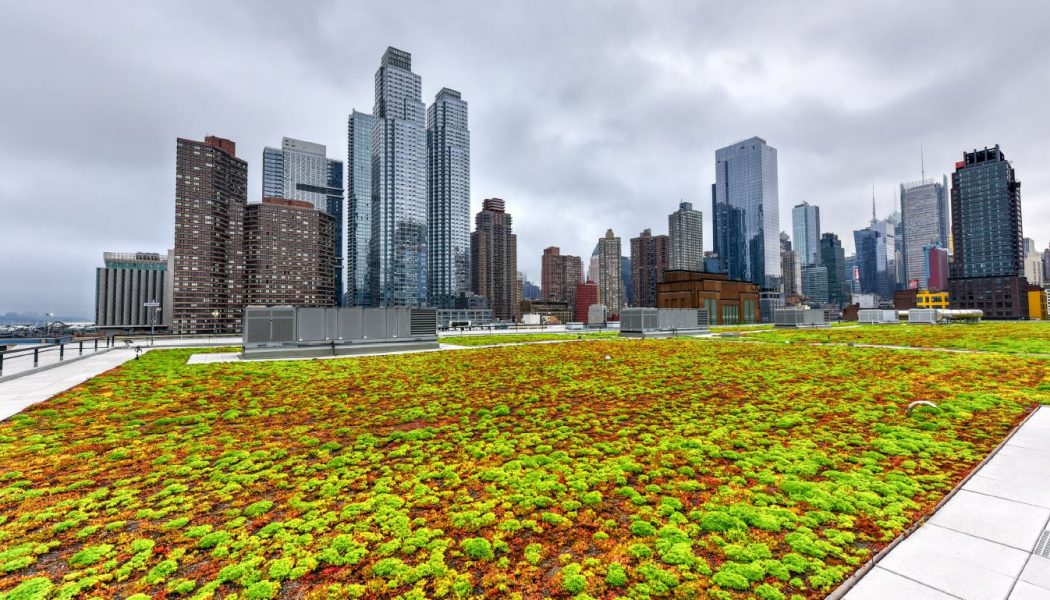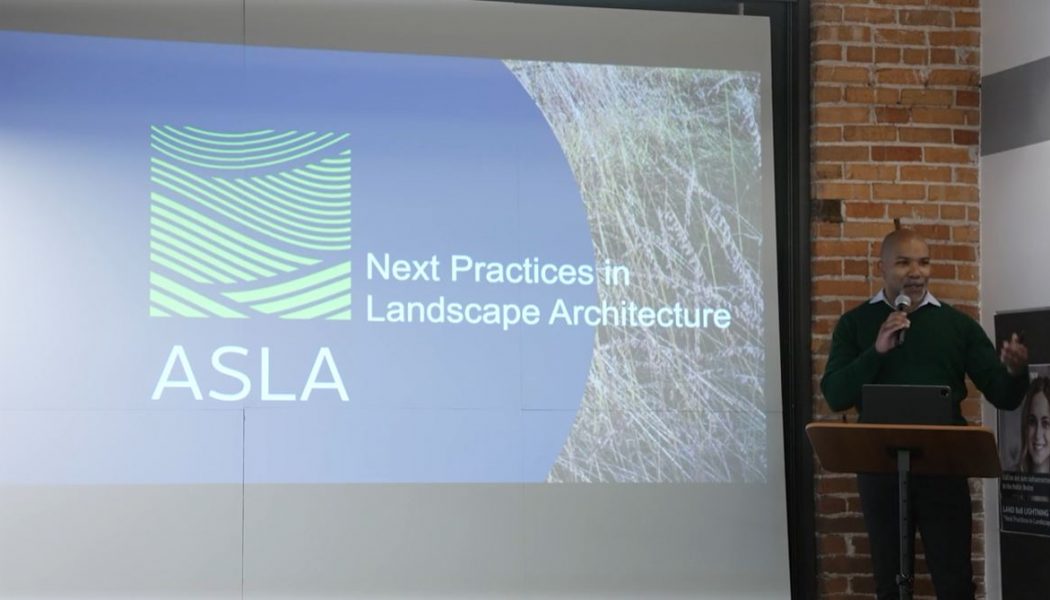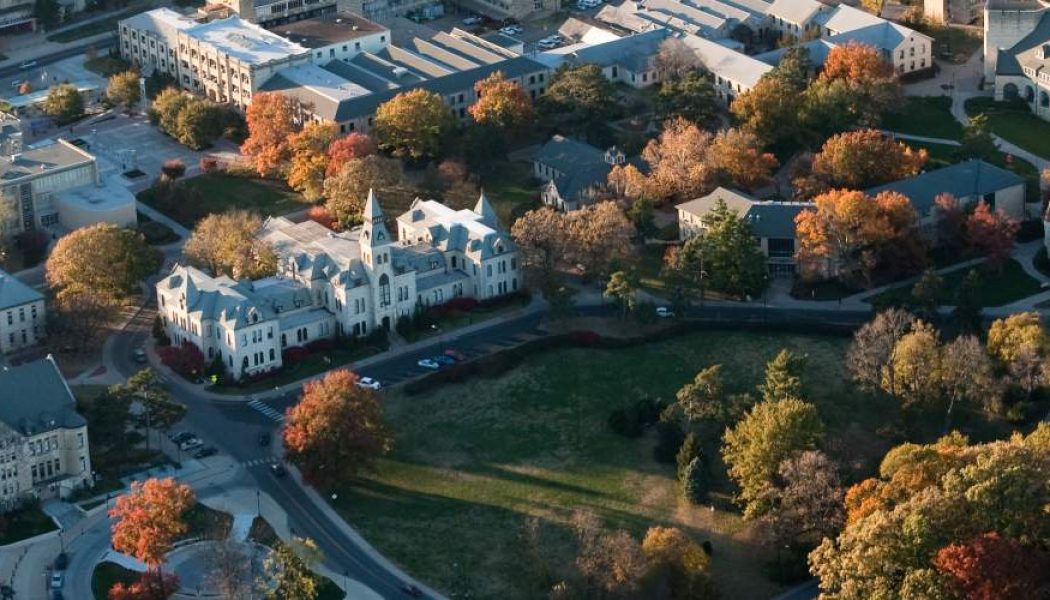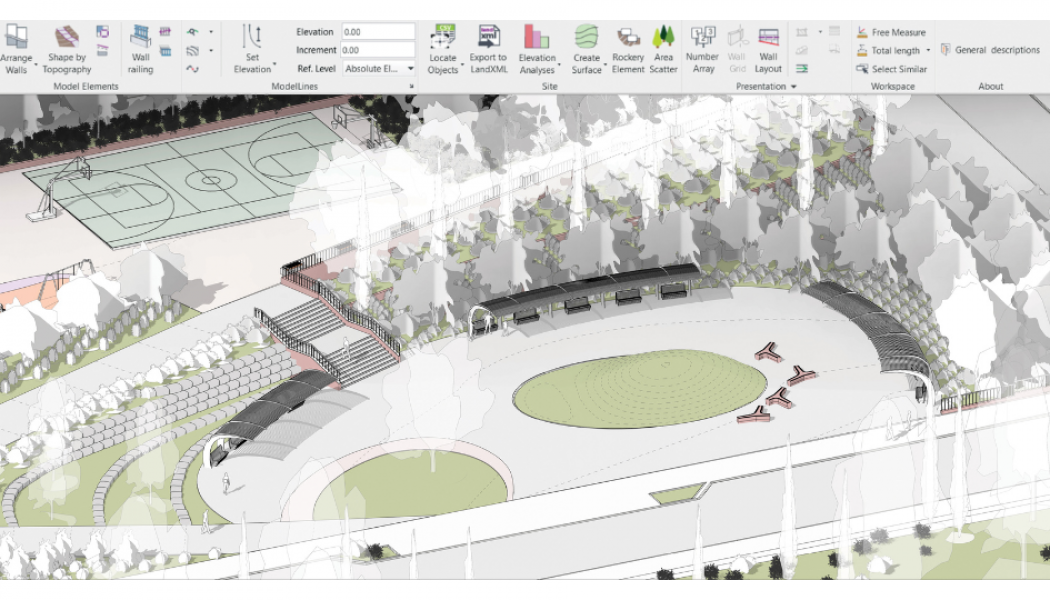Cover Story
Posts to be featured on the Home Page Slider
Neuro-Inclusive Spaces [Video]
Kathryn (Katie) Finnigan is a MLA Candidate at the University of Denver, the 2022 National LAF Olmsted Scholar, and a LAF Fellow for Innovation and Leadership. She observes that existing public spaces and environments are not designed with attention to the needs of neurodivergent individuals or communities. In light of this, Katie joined the Land8x8 Lightning Talks to showcase her qualitative research and Inclusive Design Toolkit. Her aim is to spark ideas and provide guidance on how landscape architecture can advance the profession while considering the diverse relationships individuals have with their community and the outdoors. Katie’s work aims to determine how outdoor environments can provide sensory support for neurodivergent populations through design interventions and real-wo...Read More
Landscape Architecture Firm Discusses “Most Compatible” Design Software
Sponsored Post Landscape architects are always on the lookout for the design software that caters to their specific needs. However, selecting the right software can be an arduous task as there are many options available in the market. With each software boasting a unique set of features and tools, it can be challenging to determine which one is the best fit. The story of Surface 678 from Durham, North Carolina encapsulates a journey familiar to many landscape architects. The firm started using AutoCAD for their projects and eventually found that the program doesn’t quite have enough capabilities dedicated to landscape architecture. Enter Vectorworks Landmark. The firm tested the software for their workflow and discovered amazing results. They’re able to manage a project from hand drawings ...Read More
Urban Steppe [Video]
Emmanuel Didier is a landscape architect, artist, and the founding principal of Didier Design Studio. He teaches graduate level design courses at the University of Colorado Denver in Auraria, CO where his current research project, “The Living Urban Campus Initiative”, is coming to life in partnership with the dean of the College of Architecture and Planning. The initiative aims to uncover the possibilities of designing within “urban steppe” landscapes, while simultaneously creating enjoyable campus spaces for students, faculty, and visitors. At the Land8x8 Lightning Talks in Denver, Didier set the scene by flashing two images on the screen. On the left, you see lush turf lawn covering Harvard’s campus in Cambridge, while on the right, you see an image of UC Denver’s cam...Read More
Outdoor Spaces Virtual Conference
The Architect’s Newspaper is bringing back its Outdoor Spaces virtual conference on April 27. Featuring cutting-edge projects in landscape architecture, the event will highlight issues related to ecology, sustainability, public space, and urban planning, as well as new technological developments in design. Click here to view additional conference information and register. ASLA Members receive 20% off registration! Use code ASLA. Streetscapes for Wellness The program will begin with a presentation on the NYC Public Design Commission’s new report, Designing New York: Streetscapes for Wellness. Jenna E. Miller, deputy director of urban design and policy at the Public Design Commission, was the project lead and author of the new report. She will present her findings and design recommendation...Read More
Colorado Brightfields [Video]
Scott Carman is an assistant professor of landscape architecture and urban design at Colorado State University. He joined the Land8x8 Lightning Talks to speak about his recent research and advocacy project, the Colorado Brightfields Initiative. The research project began in 2018 after Governor Jared Polis, aimed to set the state of Colorado on a path to 100% renewable energy generation by 2040. The term “brightfield” was coined in 2012 by the EPA to describe contaminated or disturbed sites, such as brownfields, with the potential to be converted for renewable energy generation. One example can be seen as photovoltaic panels harvest solar energy over the former Hickory Ridge Landfill in Conley, Georgia. Because of the large land areas needed for renewable energy farms, land use...Read More
Next Generation Playscapes! [Video]
Sara Bonacquist is a landscape architect at Design Workshop in Denver. As a landscape architect, she understands the importance of playgrounds and outdoor play environments for children. These are critical spaces where kids experiment, find joy, express creativity, collaborate with other kids, and find community. At the Land8x8 Lightning Talks, Sara noted the responsibility and influence landscape architects have over the outdoor spaces that shape the next generation of play. “We have come a long way, but the fundamental play theories discussed are the same. We need to design mentally and physically challenging places, based in specific places/contexts, that are safe, but still fun, and accessible to everyone.” Sara recounts some of the earliest play theories: The earliest American and Eur...Read More
Green Roofs for Healthy Cities Brings Grey To Green Conference to Boston
The 2023 Boston Grey to Green Conference, taking place on April 23-24, aims to explore the latest developments in green infrastructure science, economic valuation, asset management, public policy, technologies, and best practices in design, installation, and maintenance. The conference seeks to inform the current policy debate and advocate for a rapid and significant increase in green infrastructure investment, a growing trend worldwide. Tailored content will be provided for designers, contractors, installers, maintenance professionals, and policymakers, with a focus on practical information about the implementation and maintenance of green infrastructure systems. The event will span two days, offering training, tours, technical presentations, panel discussions, and a central trade show. T...Read More
Shifting Paradigms: Collaboration in Practice [Video]
At the Land8x8 Lightning Talks in Denver, CO, Founder + Principal of Studio Siembra, Magdalena (Maggie) Aravena, offered insight into how the practice of landscape architecture can be transformed by new models of collaboration. A first-generation Chilean, her service and practice have always revolved around people. “Siembra,” her firm name, stems from the Spanish word “to sow” – “Sowing seeds of optimism, resilience, and beauty is what we’re doing, or what we should be doing with practice.” Recognized as ASLA’s 2021 recipient of the Emerging Professional Medal, Magdalena is an admired professional within the Landscape Architecture community. With seven years of previous landscape architecture experience, Maggie knew there was potential to think outside of the box when it came to the futur...Read More
Landscape Architecture + Climate Action [Video]
During the Land8x8 Lightning Talks in Denver, Torey Carter-Conneen, the CEO of the American Society of Landscape Architects (ASLA), joined seven other speakers to kick-off this set of talks centered around the theme, “Next Practices in Landscape Architecture”. He began with a question that landscape architects get asked regularly while interacting with the public: “What is Landscape Architecture?” As the leader of the largest national membership organization for landscape architects, Torey routinely introduces the profession to people who may or may not know what landscape architecture is. Simply put, landscape architects utilize a unique combination of skills: design, art, and science, according to Torey. From the intentionality of pathway materials, spacing of trees, or the direction of ...Read More
6 Reasons to Attend LABash 2023 at Kansas State University
01. The Lineup of Events 24 education sessions 6 spark talks 4 keynotes + a watercolor workshop a sketch crawl a field visit to the Konza Prairie With a focus on trailblazing topics, this year’s LABash Conference has an impressive lineup of speakers with several special events that you won’t want to miss. A guided tour of the Konza Prairie Biological Station will give a behind the scenes look at prairie conservation and management within the Flint Hills tallgrass preserve. A watercolor workshop led by K-State Assistant Professor Otto Chankyakorn will inspire attendees to apply themselves in new ways and learn techniques for watercolor painting. Featuring topics in public engagement, digital tools, landscape performance, climate action, and many others, the LABash 2023 schedule provi...Read More
Social Media Awards in Landscape Architecture 2022 – Winners!
Here are the winners of the 5th Annual Social Media Awards in Landscape Architecture presented by Land8 and the American Society of Landscape Architects! Social media has the power to significantly increase the awareness and importance of the profession of landscape architecture, and Land8 and ASLA believe industry leaders in social media should be recognized and promoted. Be sure to follow the winners to help grow and promote the profession! Top 10 Social Media Accounts – LANDSCAPE ARCHITECTURE FIRMS 1. TBG Partners – Instagram At TBG, we use our Instagram to promote the practice of landscape architecture by sharing a behind the scenes look at our design process. With a mix of hand-drawings, diagrams, renderings, and built photos, we believe it’s important to showcase each phase of our wo...Read More
Get on the BIM Wagon Now or Forever Remain a Bystander
Sponsored Post Get on the BIM Wagon Now, or Forever Remain a Bystander Environment for Revit®, unlocking the power of BIM for landscape architecture. By Nehama Shechter-Baraban and Oren Ben-Ner For no fault of their own, landscape architects have been slow to adopt the Building Information Modeling (BIM) approach to project design. Consequently, in an AEC industry where BIM is the norm, landscape architecture isn’t given the place or significance it deserves, resulting not only in greater expense and delays, but in poorer design and execution outcomes. Environment for Revit® has removed the obstacles to transitioning to BIM, creating an unparalleled BIM for landscape architecture experience. Sitting on the BIM fence is now a matter of choice, and we would do best to choose otherwise. Let’s...Read More



